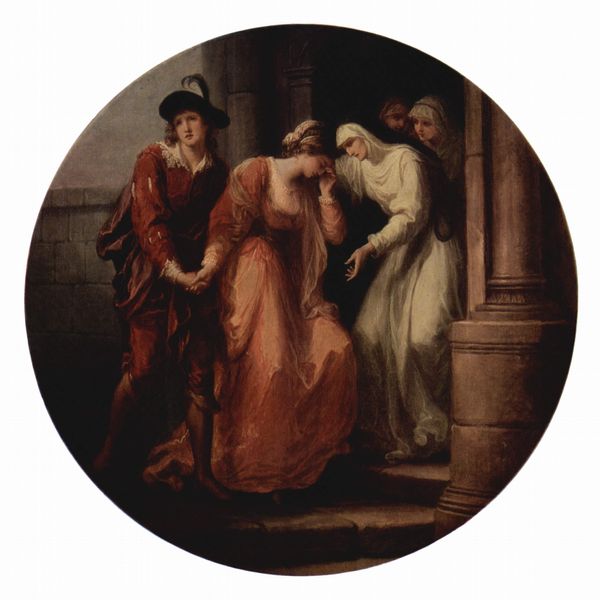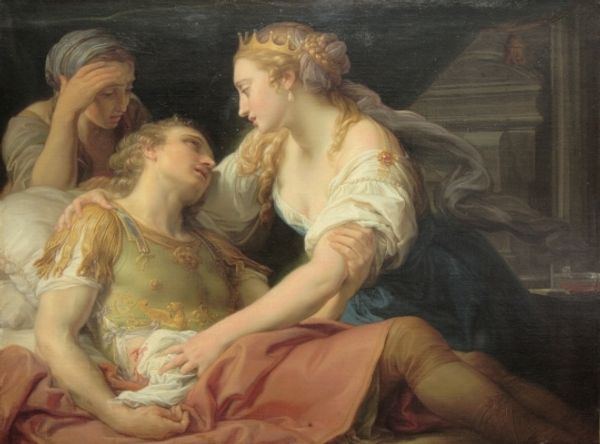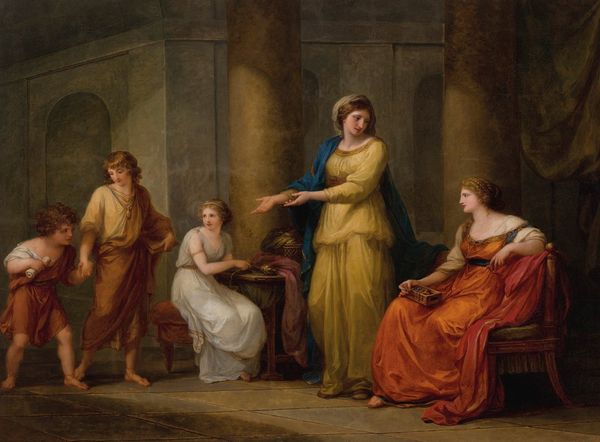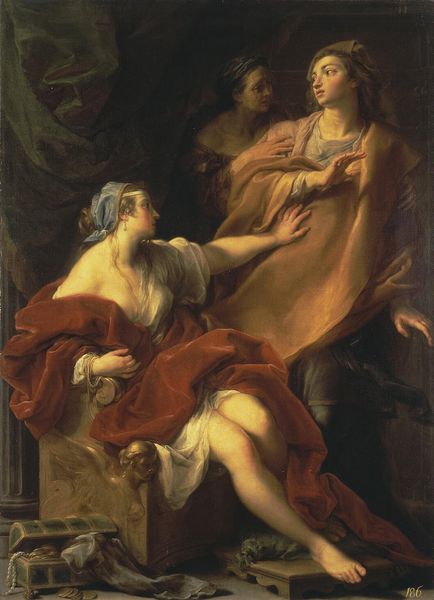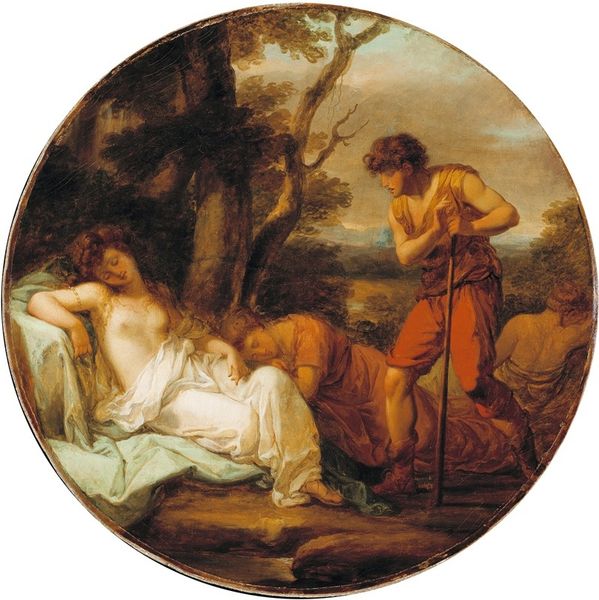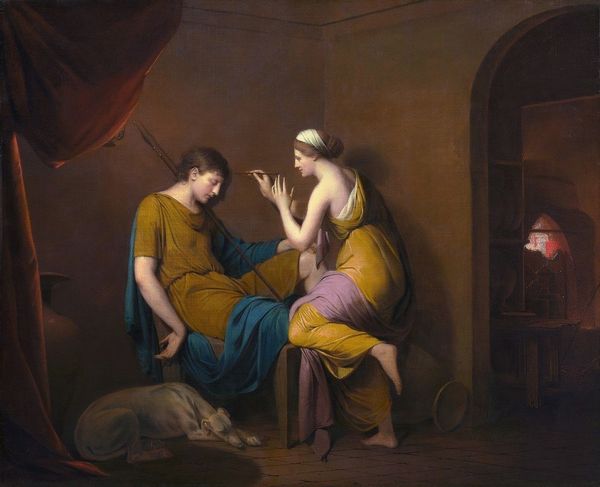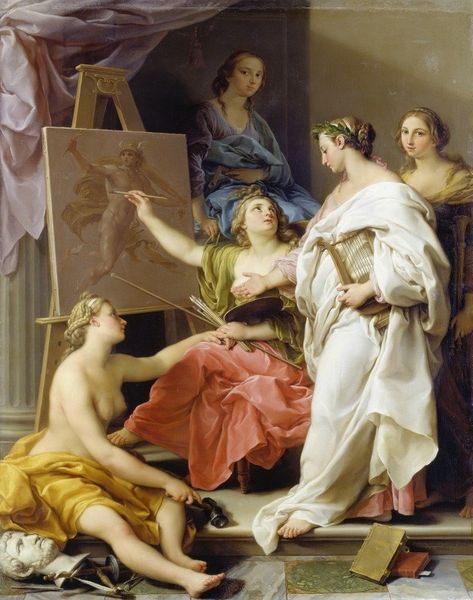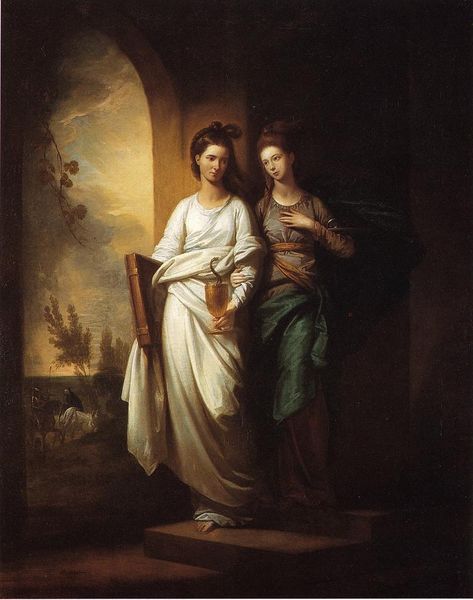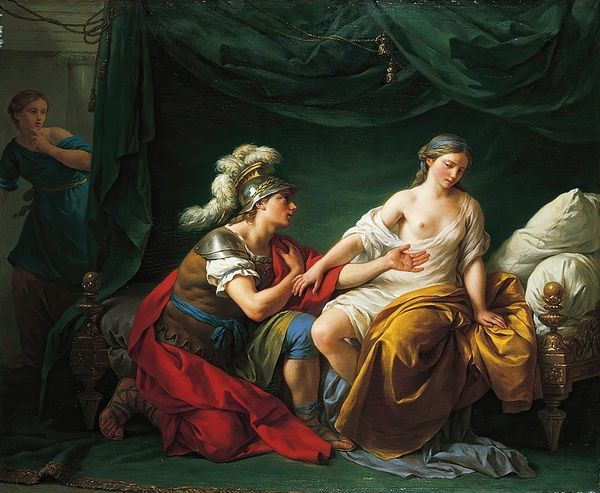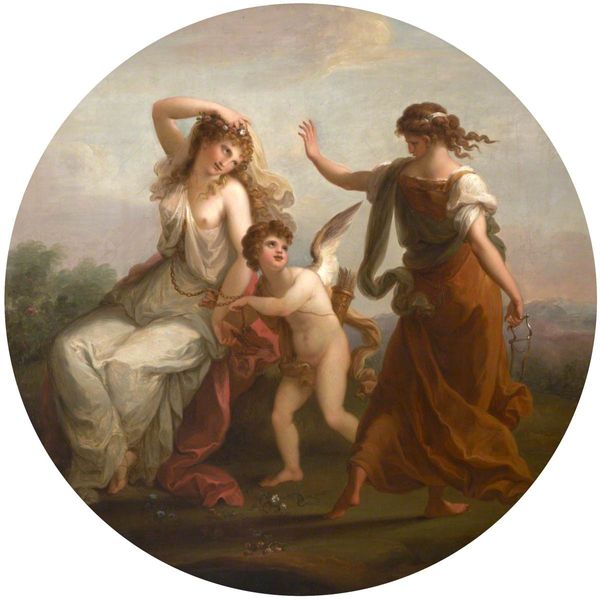
Papirius Praetextatus Entreated by his Mother to Disclose the Secrets of the Deliberations of the Roman Senate
0:00
0:00
painting, oil-paint
#
neoclacissism
#
allegory
#
narrative-art
#
painting
#
oil-paint
#
figuration
#
mythology
#
history-painting
Copyright: Public Domain: Artvee
Angelica Kauffmann, a Swiss artist who found success in England, painted this scene from Roman history. The image speaks to the era’s fascination with classical virtue, but we should also remember the male-dominated institutions that Kauffmann had to navigate as a female artist. Here, we see Papirius, a young senator, resisting his mother’s pressure to reveal state secrets. The painting uses the visual codes of Neoclassicism: the Roman setting, the classical drapery, the emphasis on moral rectitude. But Kauffmann complicates this straightforward classicism. The mother is not a villain, but a sympathetic figure. The son’s loyalty to the Senate is set against his filial duty, setting up a tension between public and private life. To understand this painting better, we can look at the writings of the period that discuss the role of women in society. We can consider how Kauffmann's position as a woman artist shapes the way she represents this encounter. By researching the social and institutional context, we can appreciate the nuances of this apparently straightforward image.
Comments
No comments
Be the first to comment and join the conversation on the ultimate creative platform.
